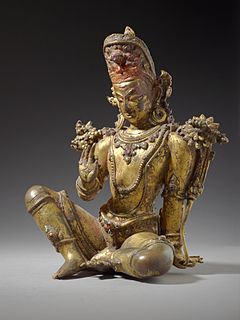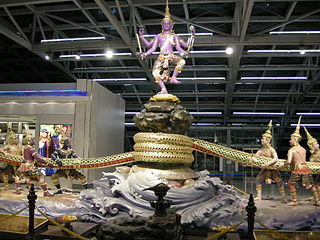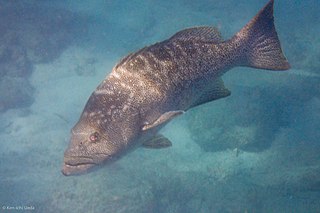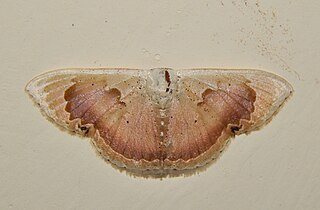
Asuras are a class of beings or power-seeking clans related to the more benevolent Devas in Hinduism.

Blepharitis is one of the most common ocular conditions characterized by inflammation, scaling, reddening, and crusting of the eyelid. This condition may also cause burning, itching, or a grainy sensation when introducing foreign objects or substances to the eye. Although blepharitis is not sight-threatening, it can lead to permanent alterations of the eyelid margin. The overall etiology is a result of bacteria and inflammation from congested meibomian oil glands at the base of each eyelash. Other conditions may give rise to blepharitis, whether they be infectious or noninfectious, including, but not limited to, bacterial infections or allergies.

Rosacea is a long-term skin condition that typically affects the face. It results in redness, pimples, swelling, and small and superficial dilated blood vessels. Often, the nose, cheeks, forehead, and chin are most involved. A red, enlarged nose may occur in severe disease, a condition known as rhinophyma.
Ocular rosacea is a manifestation of rosacea that affects the eyes and eyelids. Signs and symptoms generally consist of redness, irritation or burning of the eyes. Affected individuals may also feel that there is something, such as an eyelash, in the eye and frequently have redness of the nose and cheeks as well.

Deva means "heavenly, divine, anything of excellence", and is also one of the terms for a deity in Hinduism. Deva is a masculine term; the feminine equivalent is Devi.

Ivermectin is a medication used to treat many types of parasite infestations. This includes head lice, scabies, river blindness (onchocerciasis), strongyloidiasis, trichuriasis, ascariasis, and lymphatic filariasis. It can be taken by mouth or applied to the skin for external infestations. Use in the eyes should be avoided.

The Samudra Manthana is one of the best-known episodes in the Hindu philosophy narrated in the Bhagavata Purana, in the Mahabharata and in the Vishnu Purana. The Samudra Manthana explains the origin of Amrita, the nectar of immortality and the omnipotent god of destruction Shiva drank the vish.

Perioral dermatitis, also known as periorificial dermatitis, is a common type of skin rash. Symptoms include multiple small (1–2 mm) bumps and blisters sometimes with background redness and scale, localized to the skin around the mouth and nostrils. Less commonly the eyes and genitalia may be involved. It can be persistent or recurring and resembles particularly rosacea and to some extent acne and allergic dermatitis. The term "dermatitis" is a misnomer because this is not an eczematous process.

Brimonidine is a medication used to treat open-angle glaucoma, ocular hypertension, and rosacea. In rosacea it improves the redness. It is used as eye drops or applied to the skin.

An asura in Buddhism is a demigod or titan of the Kāmadhātu. They are described as having three heads with three faces each and either four or six arms.

Rhinophyma is a condition causing development of a large, bulbous nose associated with granulomatous infiltration, commonly due to untreated rosacea. The condition is most common in older white males.

Asura is a genus of moths in the subfamily Arctiinae erected by Francis Walker in 1854.

Steroid-induced rosacea is an iatrogenic condition from the use of either systemic steroid or topical steroids. It is nearly identical to steroid induced acne from the standpoint of etiology.

Mycteroperca rosacea, the leopard grouper or golden grouper, is a species of marine ray-finned fish, a grouper from the subfamily Epinephelinae which is part of the family Serranidae, which also includes the anthias and sea basses. It is found in the Eastern Central Pacific that occasionally makes its way into the aquarium trade.
Persistent edema of rosacea is a hard, nonpitting edema found on the areas involved, those mainly being the forehead, glabella, upper eyelids, nose, and/or cheeks.
Gram-negative rosacea is a cutaneous condition that clinically looks like stage II or III rosacea.
Gnathophyma involves swelling of the chin. It is a type of lesion associated with rosacea, a common chronic inflammatory skin disorder of the sebaceous glands characterized by redness, swelling, and acne-like pustules.

Okenia rosacea common name Hopkin's Rose nudibranch, is a species of sea slug, specifically a dorid nudibranch, a marine gastropod mollusc in the family Goniodorididae.

Asura's Wrath is an action video game developed by CyberConnect2 and published by Capcom. Asura's Wrath was first announced at the Tokyo Game Show in 2010, and was released worldwide in February 2012. The game is playable on PlayStation 3, Xbox 360, Xbox One via 360 backwards compatibility, and the PlayStation 4 and PC via PlayStation Now.

Somatina rosacea is a moth of the family Geometridae first described by Charles Swinhoe in 1894. It is found in northeast India's Khasi Hills and in Taiwan.















